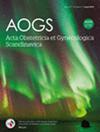Reframing spontaneous preterm birth as a preventable adverse outcome—A clinical audit of a preventative toolbox
Abstract
Introduction
Spontaneous preterm birth is a major cause of perinatal morbidity and mortality and has traditionally been viewed as an inevitable event affecting a small proportion of pregnancies. Clinical practice guidelines recommend measures to predict pregnancies at risk of spontaneous preterm birth and prophylactic treatments. We performed this study to assess adherence to current guidelines for prediction and prevention of spontaneous preterm birth and to evaluate the effectiveness of current predictive tools.
Material and Methods
Retrospective audit of all spontaneous preterm birth in singleton pregnancies preceded by spontaneous labor or preterm prelabor rupture of membranes less than 37 weeks at an Australian metropolitan hospital from January 1, 2019, and December 31, 2020. Termination of pregnancy and fetal abnormalities were excluded. Electronic medical record data was collected for maternal demographic information, antenatal care and use of current predictive measures, use of prophylactic treatments, and pregnancy and newborn outcomes.
Results
Two hundred sixty-seven spontaneous preterm births were included, comprising 3.5% of all births over the study period. Seventy-eight percent of these were in women defined as low-risk for preterm birth. Screening for bacteriuria was performed in 59.1% and 65.9% of low- and high-risk women, respectively. Cervical length measurement was performed in 65% and 72% of low- and high-risk women; only 10.7% of low-risk and 11.4% of high-risk women with sPTB had a short cervix prior to 24+6 weeks gestation. The mean gestational age at birth was 34+0 and 35+0 weeks for low- and high-risk women (p = 0.38); the rate of perinatal death was 9.6% in low-risk pregnancies and 4.2% in high-risk pregnancies (p = 0.39).
Conclusions
Adherence to clinical guideline recommendations for prediction and prevention of sPTB was suboptimal in this cohort. The majority of spontaneous preterm births occur in women without risk factors and most women with sPTB in this cohort were not identified as having a short cervix in the early second trimester; these preterm births are therefore not identified by current predictive tools. Preterm birth continues to be associated with an increased risk of perinatal death despite the use of current predictive and preventative measures.


 求助内容:
求助内容: 应助结果提醒方式:
应助结果提醒方式:


